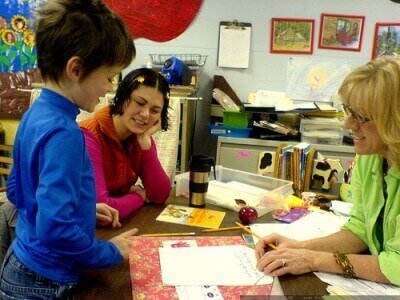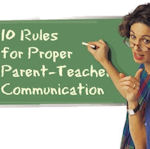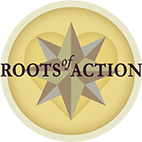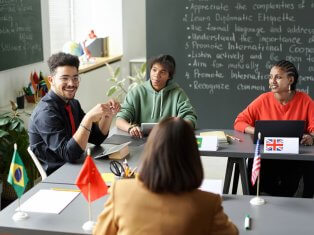
Years of academic studies have shown that parent engagement is linked to children’s academic, social, and emotional development.
But what is parent engagement? And how must it shift to meet the increasing demands of 21st century learners?
Many equate parent engagement to volunteering, school governance, and fundraising. While these activities are vitally important to schools, the kind of parent engagement that affects student success is vastly different. This type of engagement involves parents as teachers and learners. It means building parent-school partnerships that not only increase student learning but expand learning for everyone in a child’s support system.
We know that learning is dependent on an interconnected system of relationships and support. Yet despite extensive research, we are failing to create healthy partnerships between parents, teachers, and students that encourage learning and innovation. To understand how parent engagement must change, a quick history lesson is helpful.
Brief History of Parent Engagement
When we look at schools historically, their structure and organization goes back to the Industrial Revolution when they were founded to resemble well-oiled machines. They were envisioned and created as closed, self-sufficient systems. Responsibilities within the schools were fragmented between principals, teachers, counselors, and administrators, each performing specialized tasks. Parents had no roles.
 Over a period of many years, parent engagement grew from programs that merely educated them to processes that enlisted parents in volunteering, fund raising, and school governance. But regardless of how parents were involved with schools, there were always unwritten rules of engagement. It wasn’t until the 1970’s that Ira Gordon spearheaded efforts to develop the “parent-as-teacher” role, helping increase children’s academic performance and develop more positive home-school relationships.
Over a period of many years, parent engagement grew from programs that merely educated them to processes that enlisted parents in volunteering, fund raising, and school governance. But regardless of how parents were involved with schools, there were always unwritten rules of engagement. It wasn’t until the 1970’s that Ira Gordon spearheaded efforts to develop the “parent-as-teacher” role, helping increase children’s academic performance and develop more positive home-school relationships.
Insisting that teachers must learn from parents as well as parents from teachers, Gordon pointed out that educators needed to develop new attitudes toward parents, including the ability to collaborate with them. This was a major shift in thinking for schools, a shift that has never been successfully achieved to this day. Why? Some believe the machine metaphor is so entrenched in our thinking about schools that it is difficult for them to embrace the idea of education as a collaborative partnership. Rather, it is more comfortable to operate from a system of rules and guidelines.
As a result of this kind of thinking, the past 30 years of research on parent engagement has mostly focused on specialized programs for parents rather than on how parents and schools collaborate to expand learning for everyone. It has particularly looked at how to improve outcomes of children from socioeconomically disadvantaged environments. Measured by improved student test scores, many programs have produced success. However, most programs are difficult to replicate from school to school.
Partnerships Based on Collaboration and Learning
 Today’s concept of family-school partnerships echo back to the ideas of Ira Gordon (1977), implying that parents and schools share equally valued roles in education. To make partnerships flourish, we must go beyond thinking of parents as school volunteers and fund raisers and consider them part of a school’s learning community.
Today’s concept of family-school partnerships echo back to the ideas of Ira Gordon (1977), implying that parents and schools share equally valued roles in education. To make partnerships flourish, we must go beyond thinking of parents as school volunteers and fund raisers and consider them part of a school’s learning community.
Instead of a closed, self-sufficient system, schools must see themselves as open systems that engage in learning at the boundaries between families and communities. Peter Senge (2000) said it well, “If I had one wish for all our institutions, and the institution called school in particular, it is that we dedicate ourselves to allowing them to be what they would naturally become, which is human communities, not machines. Living beings who continually ask the questions: Why am I here? What is going on in my world? How might I and we best contribute?”
When we think of schools as learning communities, parents and teachers have the capacity to shift the machine metaphor from the grassroots upward. This is the type of change than cannot be mandated from the top-down or through policies like No Child Left Behind. In fact, research shows that partnerships based on relationships, connectedness, and flexibility hold the keys to understanding how to increase student learning and motivation.
What does this paradigm shift mean to families and schools? While parents and teachers have unique skills and expertise, no one is a single expert. We are all learners. We come together for the shared goal of educating the whole child. In many ways, we are what Etienne Wegner (2002) calls communities of practice, “groups of people who share a concern, a set of problems, or a passion about a topic, and who deepen their understanding and knowledge of this area by interacting on an ongoing basis.” What brings families and schools together is a passion for children and education.
Seven Ways Parents & Teachers Build Partnerships
Research shows that parents and teachers build partnerships that help children succeed when they:
1) Engage together in meaningful dialogue
2) Show mutual respect
3) Actively listen to one another
4) Collaborate on issues that affect student learning
5) Empathize with one another
6) Open themselves to learning from each other
7) Involve students as responsible collaborators in their own learning
Many parents and schools are not waiting for mandates from above. They are forming partnerships that encourage learning from people who do not necessarily share similar views or parenting practices. Parent-led programs like ParentNet use a communities of practice model to bring parents at different grade levels together with school liaisons. They learn together. Discussions often spur ideas that generate innovation and positive change in local schools.
It is clear that family-school partnerships for the 21st century will be different than traditional ideas of parent engagement. That should come as no surprise to educators or parents who understand that innovation in a complex, globally-connected society requires collaboration, respect, and the capacity to critically think about the changing world in which we and our children live.
References
Epstein, J. L. (2011). School, family, and community partnerships: Preparing educators and improving schools (2nd ed.). Philadelphia, PA: Westview Press.
Gordon, I. R. (1977). Parent education and parent involvement: Retrospect and prospect. Childhood Education, 54, 71-79.
Henderson, A. T., Mapp, K. L., Johnson, V. R., & Davies, D. (2007). Beyond the bake sale: The essential guide to family-school partnerships. New York: The New Press.
Price-Mitchell, M. (2009). Boundary dynamics: Implications for building parent-school partnerships. The School Community Journal, 19(2).
Senge, P. M. (2000). Systems change in education. Reflections, 1(3), 52-60.
Smit, F., Driessen, G., Sleegers, P., & Teelken, C. (2008). Scrutinizing the balance: Parental care versus educational responsibilities in a changing society. Early Child Development and Care, 178(1), 65 – 80.
Wenger, E., McDermott, R. A., & Snyder, W. (2002). Cultivating communities of practice: A guide to managing knowledge. Cambridge, MA: Harvard Business Press.
Published: November 8, 2011
Tags: Family-School Partnerships, learning, positive youth development, teachers, youth development approach


